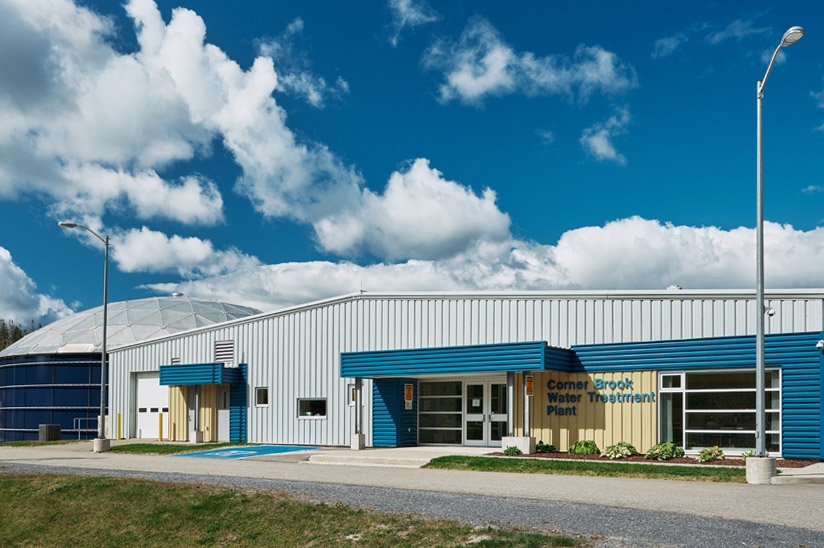Client: Serpent River First Nation
Location: Serpent River, Ontario
Size: 432 m3/day
Drinking water in the community of Serpent River First Nation (located approximately 130 km west of Sudbury) was originally provided by four communal wells servicing isolated areas through separate independent water distribution systems. Due to a lack of available flow and water quality concerns, it was decided to construct a new water treatment and supply system to service the community including any requirements for future growth.
JLR was retained by the Serpent River First Nation, in association with the Ontario Clean Water Agency (OCWA), to provide professional engineering and architectural services for detailed design, tendering, and contract administration of a new communal water treatment plant (WTP) and booster pumping station. The new system uses a surface water source (Aird Bay) and includes an expanded water distribution system.
A program of water soundings and water sampling and testing of the source water from Aird Bay was completed as part of the initial study process. This was followed by an evaluation of possible treatment options. Tubular nanofiltration and modified slow sand filtration were shortlisted as the most promising alternatives. The source water in Aird Bay of Lake Huron has relatively high colour, turbidity, and dissolved organic carbon (DOC). Due to the challenging raw water characteristics, it was decided to pilot test both filtration technologies under consideration. Tubular nanofiltration was ultimately selected as the preferred option based on a comprehensive evaluation that included the pilot testing results as well as other considerations. The water is disinfected using a combination of ultraviolet for primary disinfection and chlorination for secondary disinfection.
Site selection criteria and evaluation details for the raw water intake, low lift water pumping station, WTP, and treated water booster station were documented in a design brief. The water treatment and distribution system included two 332 m3 on-grade storage reservoirs and approximately 1.4 km of new watermain. JLR also prepared a hydraulic model of the entire distribution system using computer software to simulate various demand scenarios and evaluate the results against standard guidelines to develop an overall design basis for distribution system upgrades.






